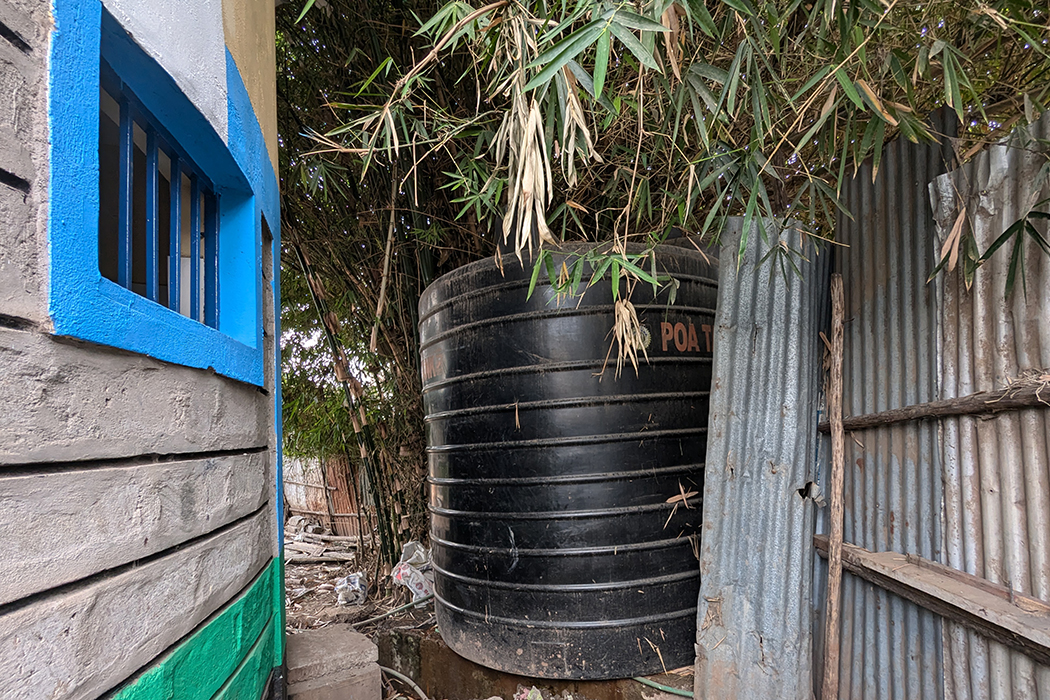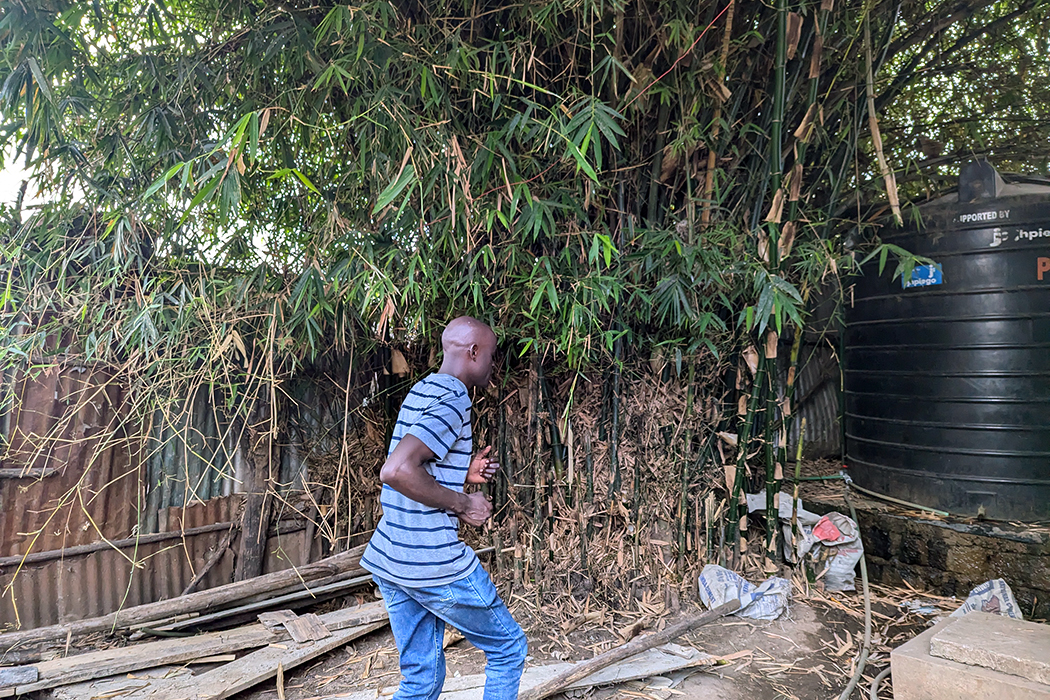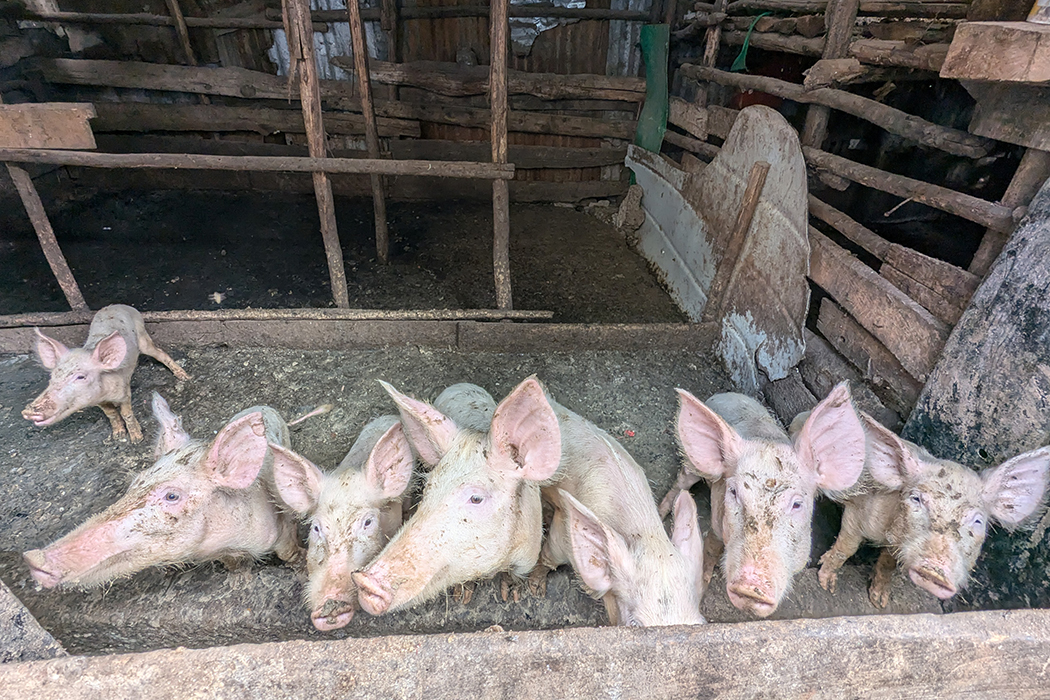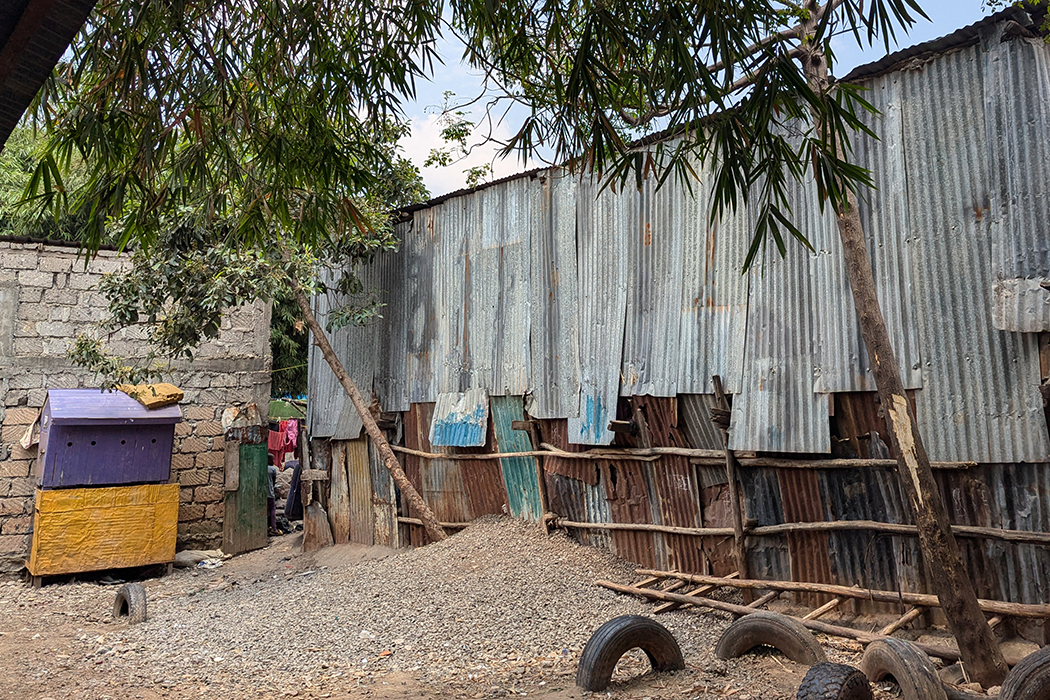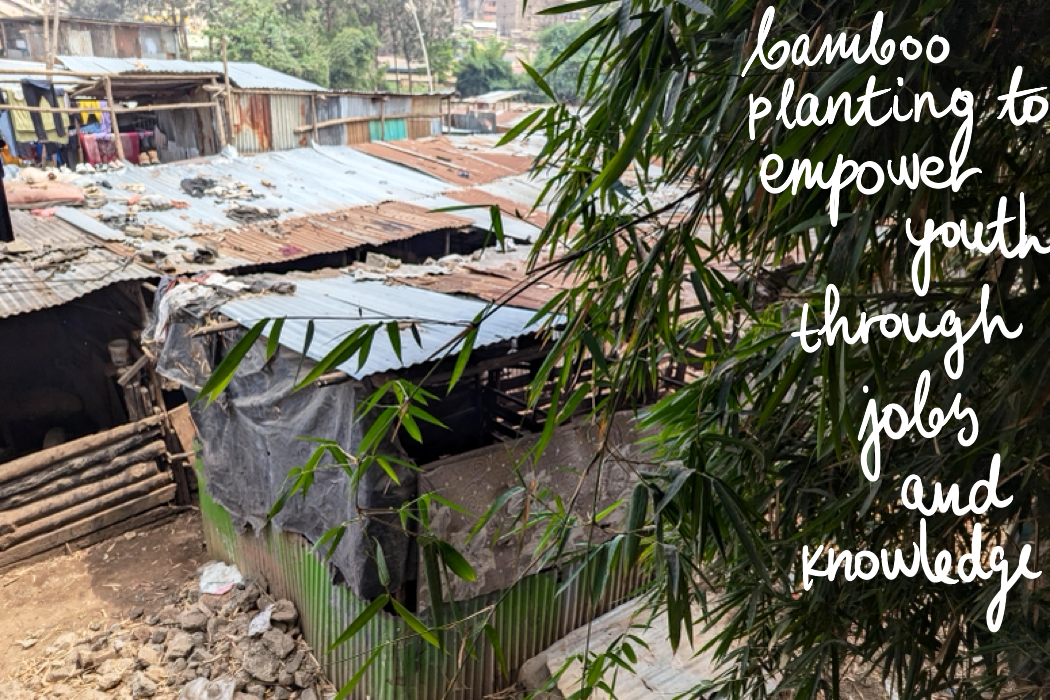
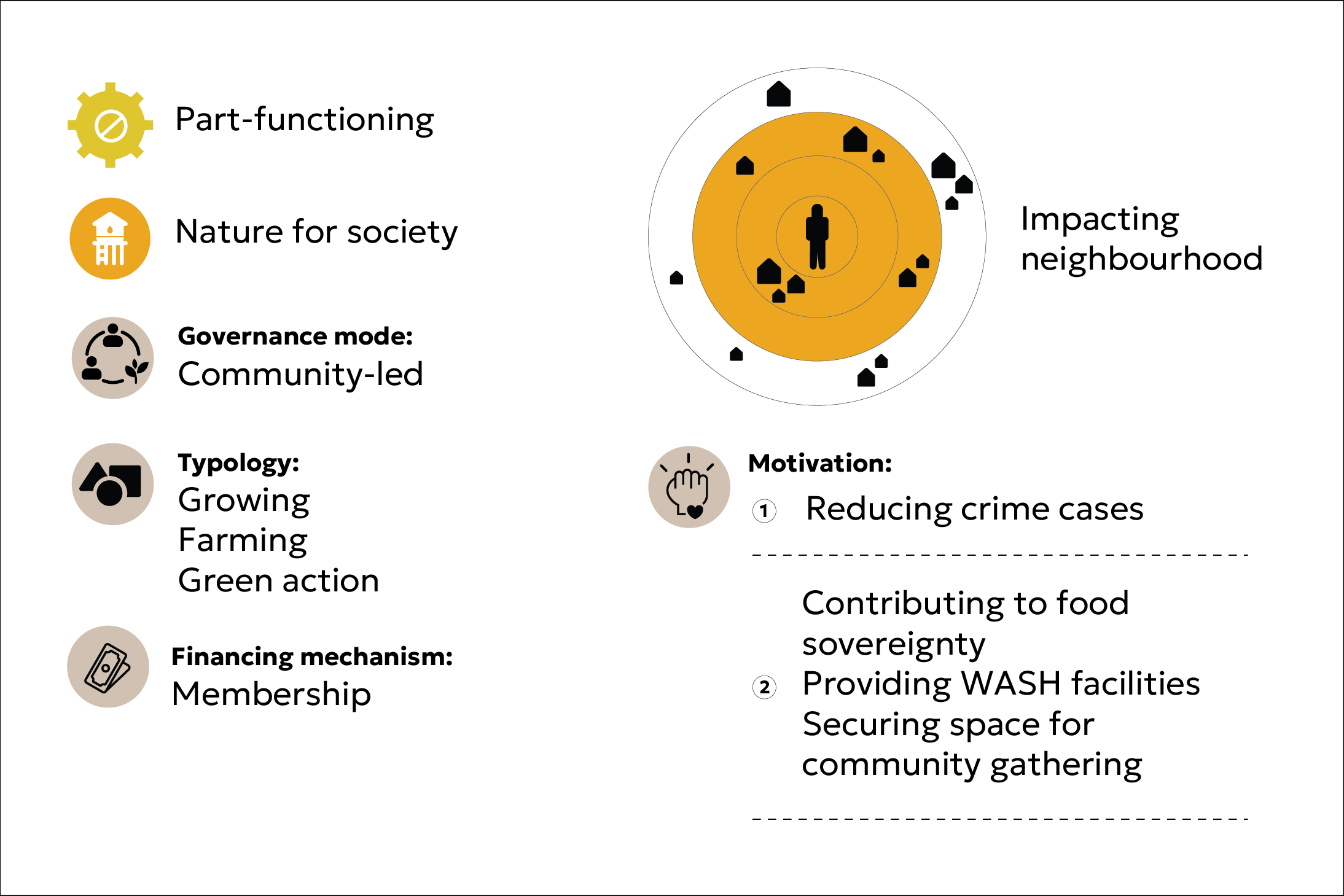
Involving youth, women, and men living in the Madoya village, they work with partners like the Centre for Peace and Nationhood, Chem, Challenge Aid, KeFRI, and the local chief to turn a site of disruption into one of hope. Primarily driven by a need to reduce crime and create livelihoods, the group is engaged in urban farming and runs a community hall and biocentre. Their work is defined by resilience; prior to the government demolitions in April 2024, they had planted over 2600 bamboo trees for soil stabilisation. Now, they are rebuilding on the cleared land, demonstrating a commitment to creating value for their community despite immense setbacks and the ongoing precarity of their situation. They are also challenged with diseases affecting their animals and vegetables.
Working towards justice:
The initiative is fundamentally participatory, mobilising residents to collectively rebuild after the shared trauma of demolition. The biocentre provides a crucial participatory space for education and community mobilisation, addressing a critical service gap. On the ground floor, it also offers free WASH facilities (water, adequate sanitation, and proper hygiene). The project seeks recognition of the community’s right to productively use vacant public land for their own social and economic betterment. Their past effort to plant thousands of trees demonstrated a clear recognition of environmental risks and their capacity to address them. By focusing their efforts on this site, they are directly addressing a place of spatial and social injustice, distributing opportunities for income, food security, and education where they are most needed.
The potential to benefit people and nature:
The group’s past action of planting over 2600 bamboo trees to prevent soil erosion was a significant, large-scale intervention that used ecological processes to mitigate environmental risk. Though this was destroyed, the knowledge and intent remain. Their current efforts to establish urban farming on the cleared rubble represent a direct use of a disturbed landscape to meet immediate human needs for food and income, laying the groundwork for more complex restoration.
The cleared riverbank offers potential for an integrated, resilient design. The group could re-initiate their bamboo planting on a large scale, creating a biodiverse, protective buffer that stabilises the soil while providing raw materials for local enterprise. By combining their demonstrated knowledge of restoration with their social programmes, they can become a leading example of post-disaster, community-led regeneration. The community hall and animal husbandry could be a hub from where Madoya Tumaini could care and protect the green riverbanks of Mathare.
